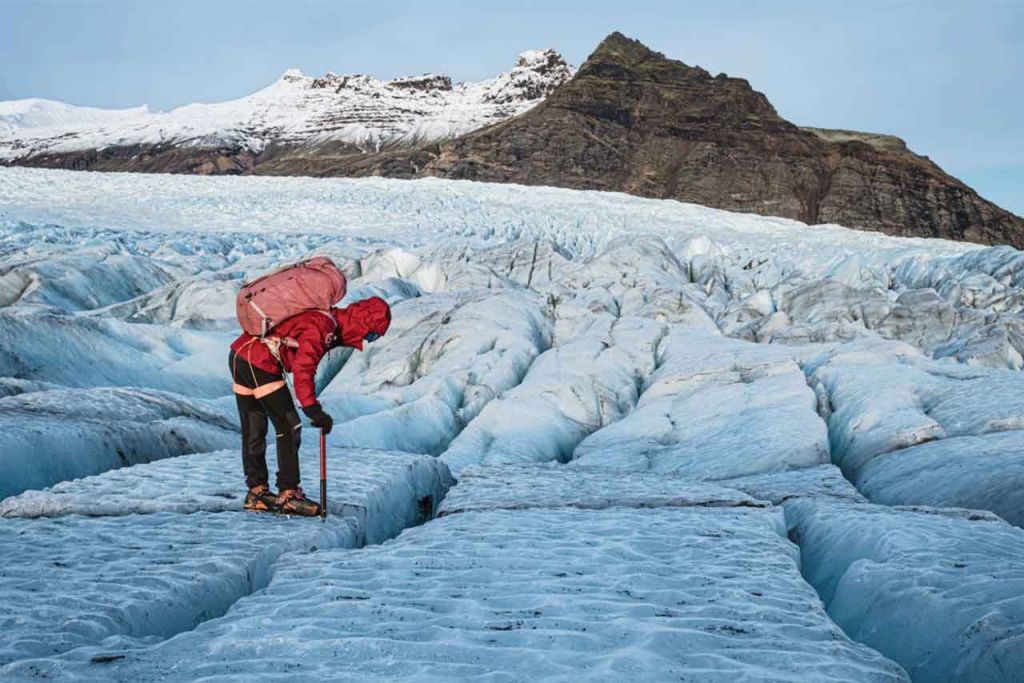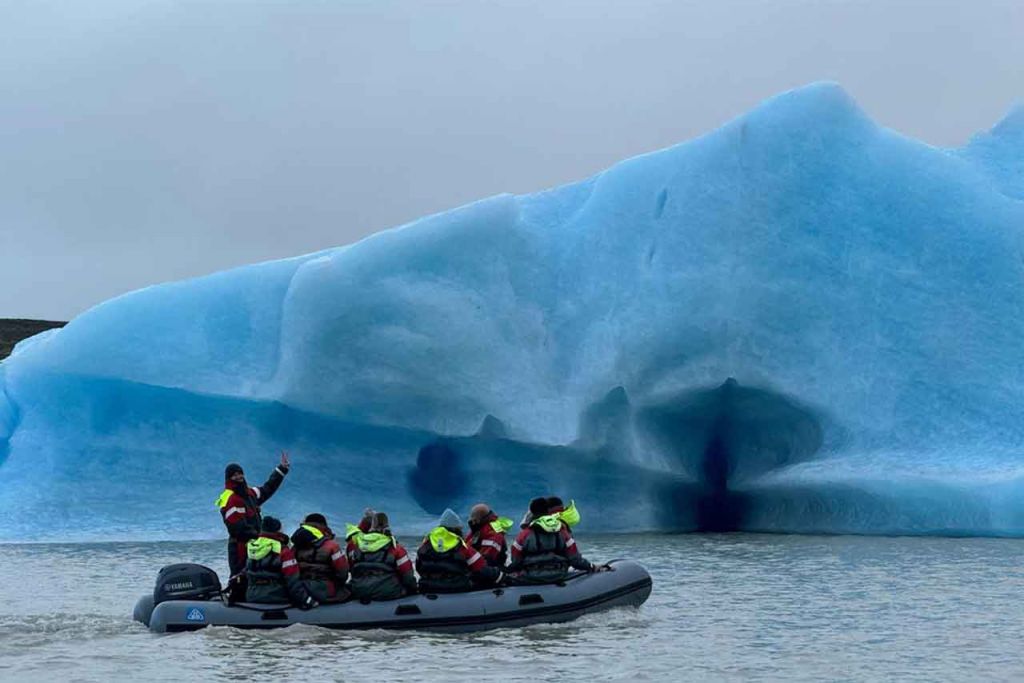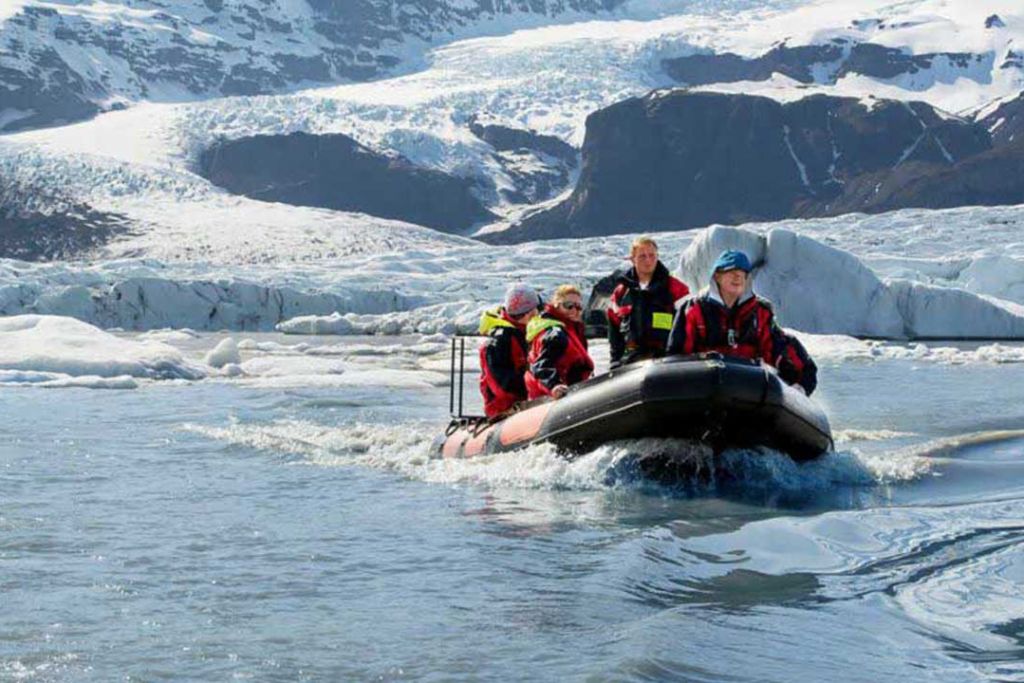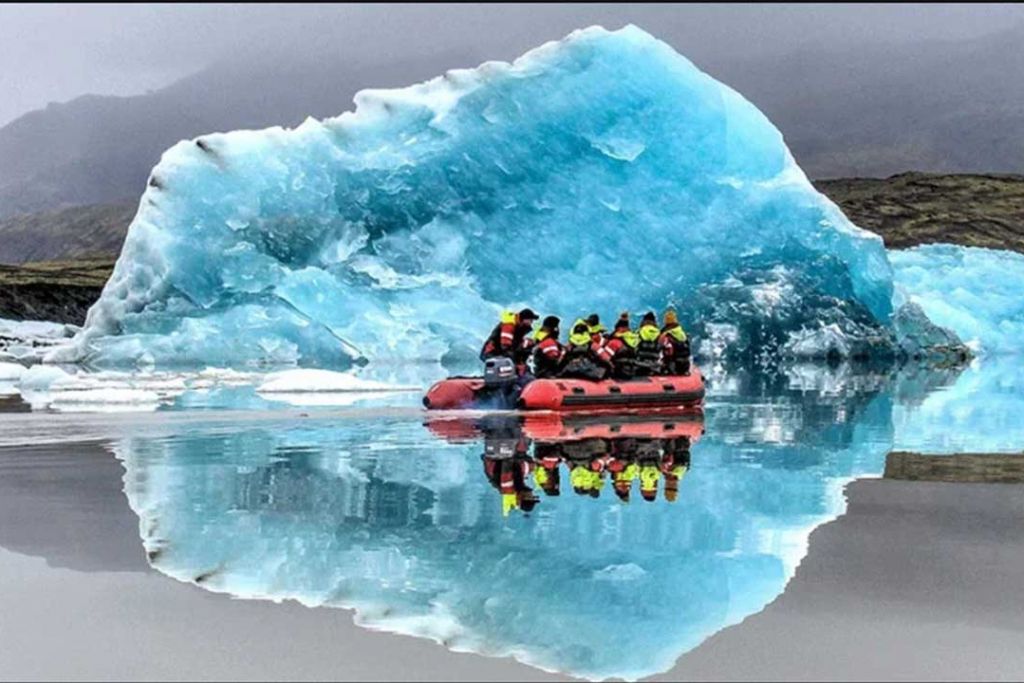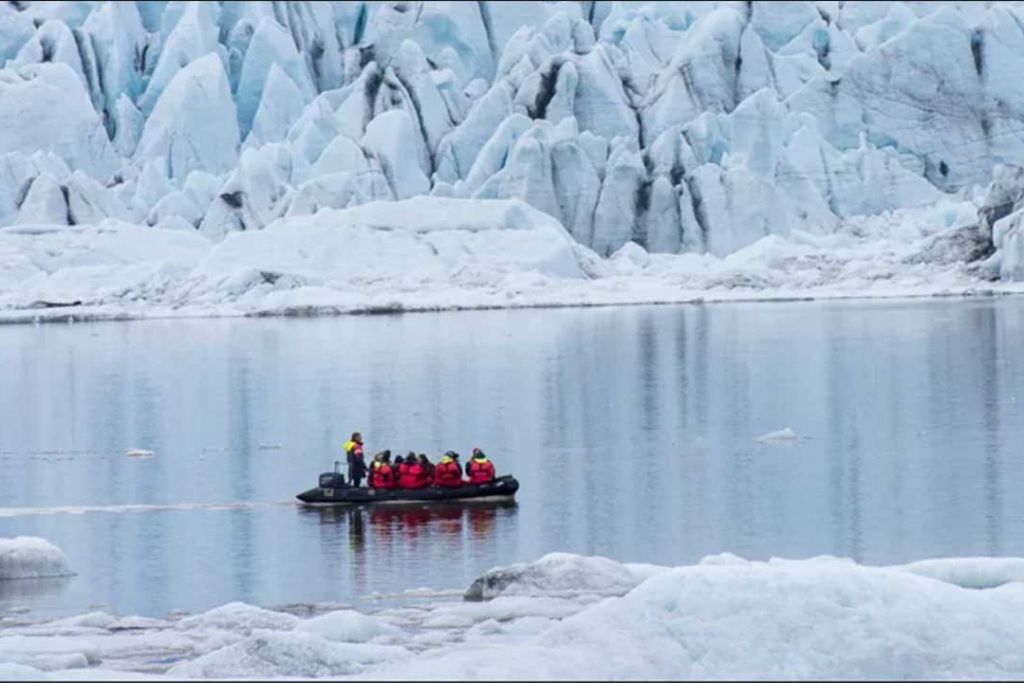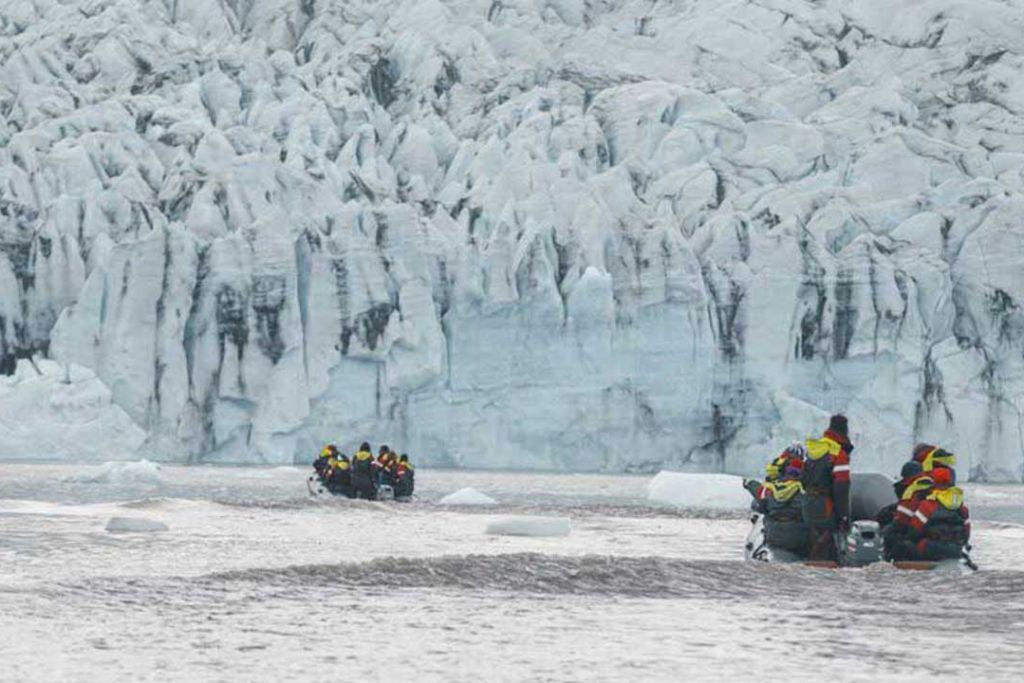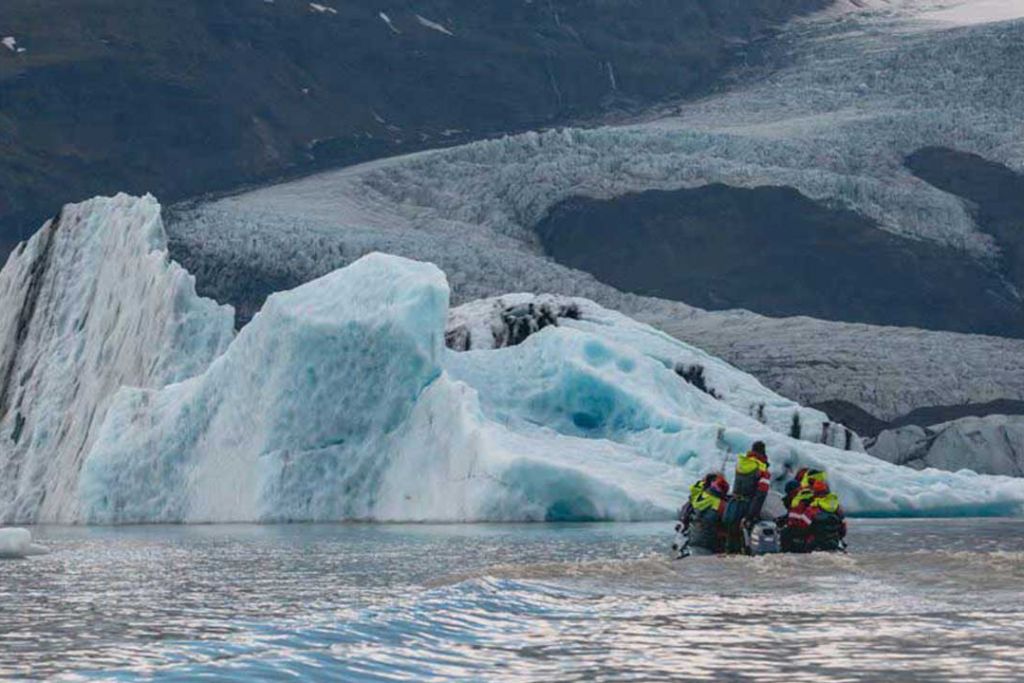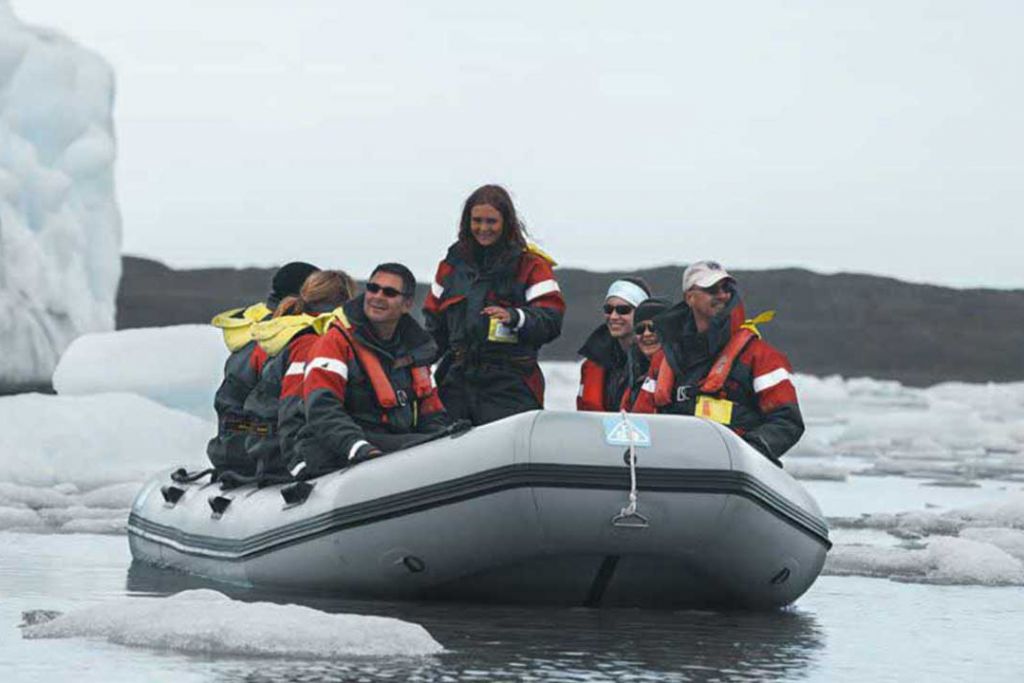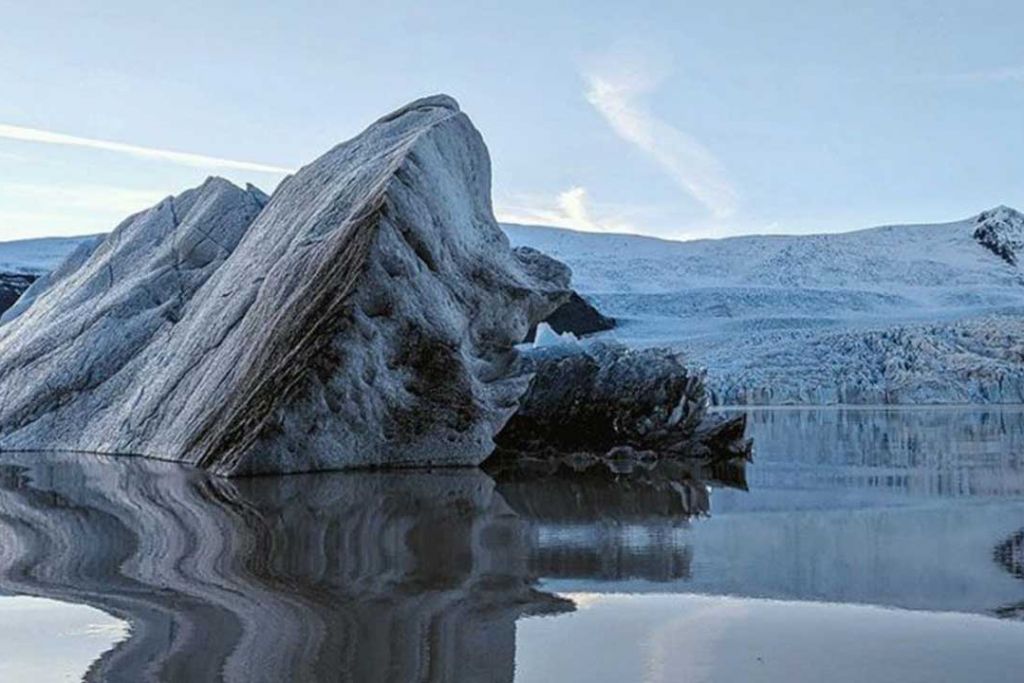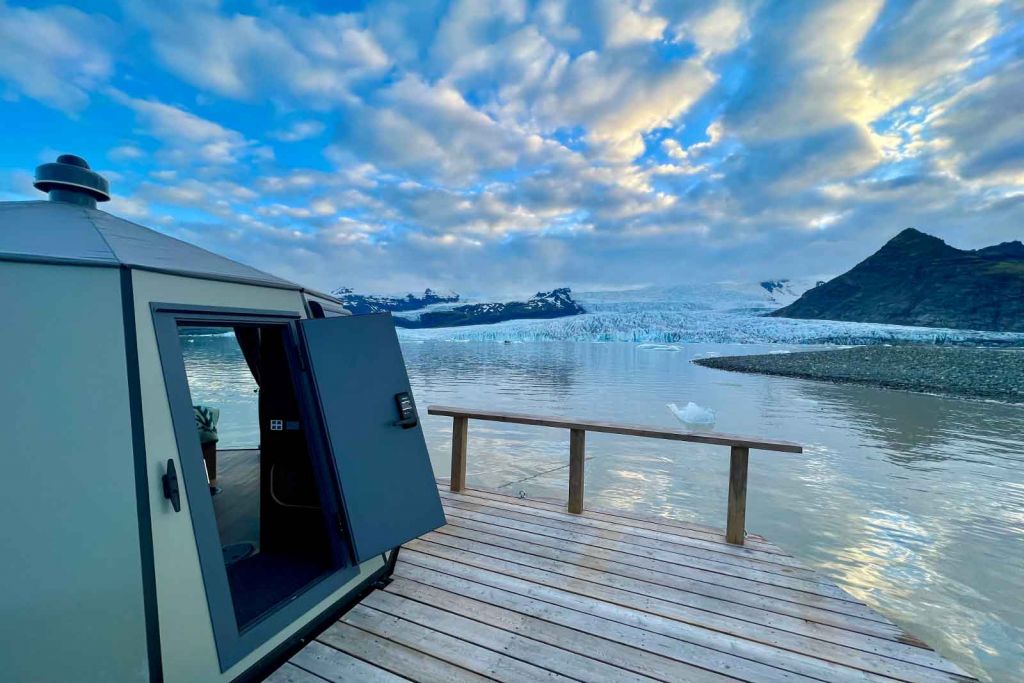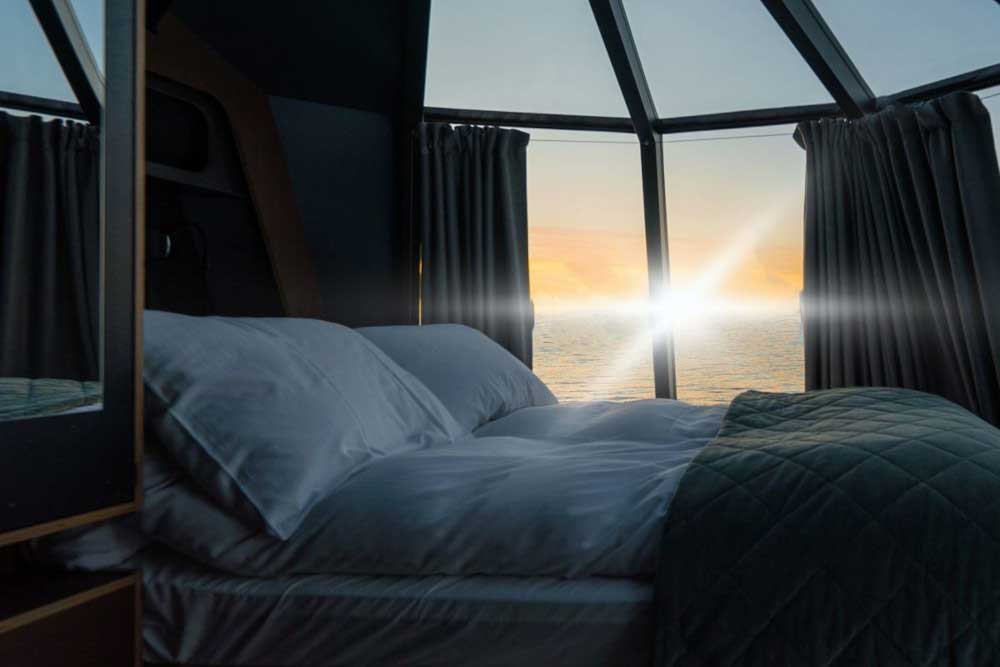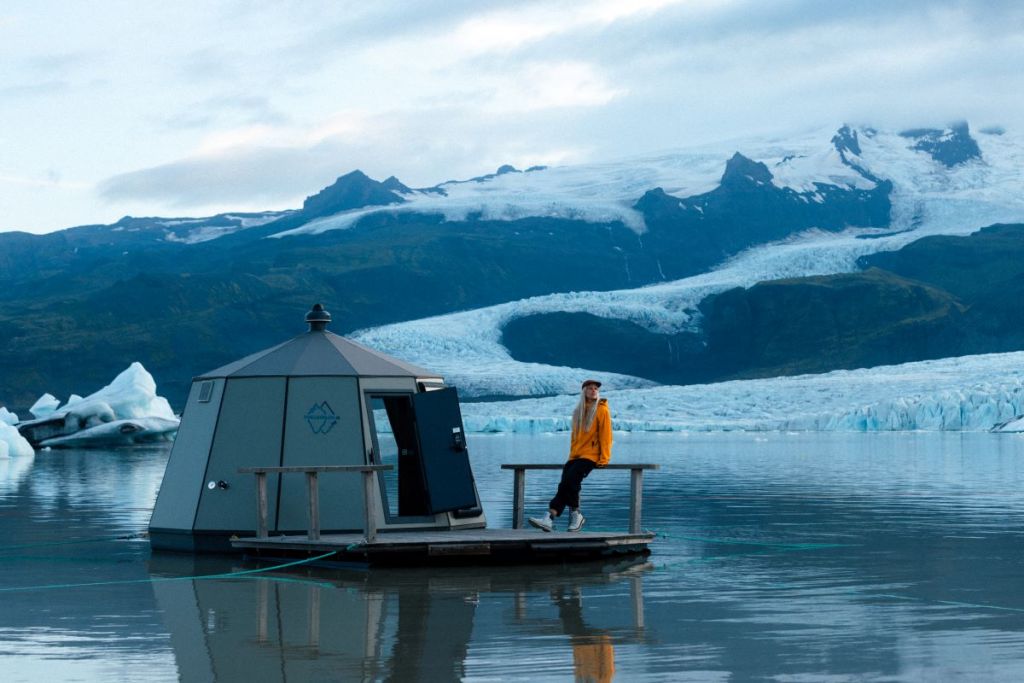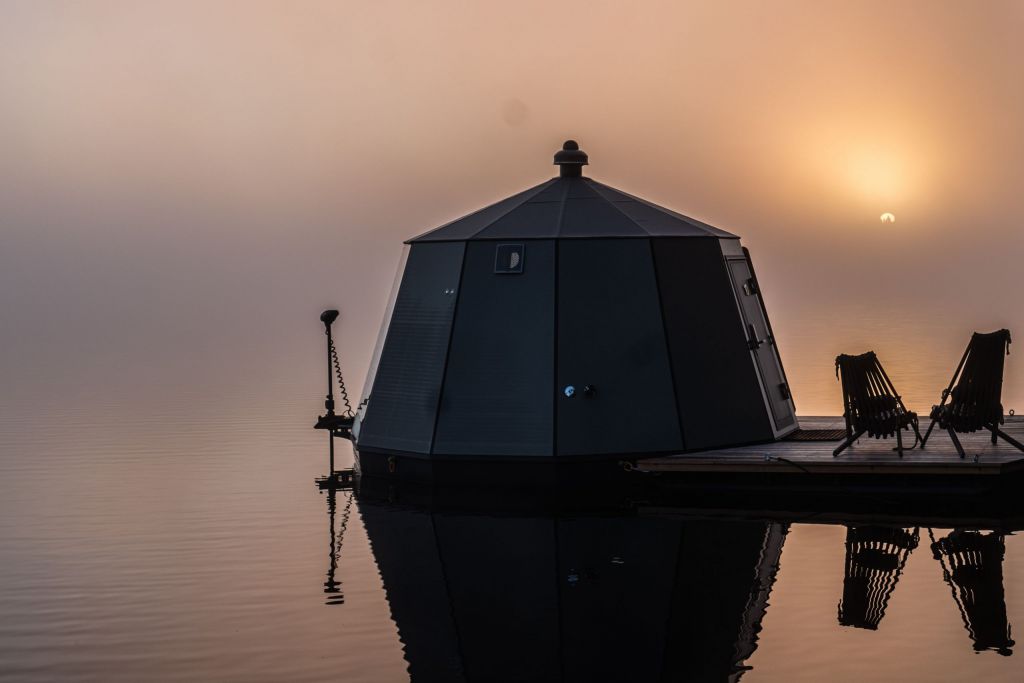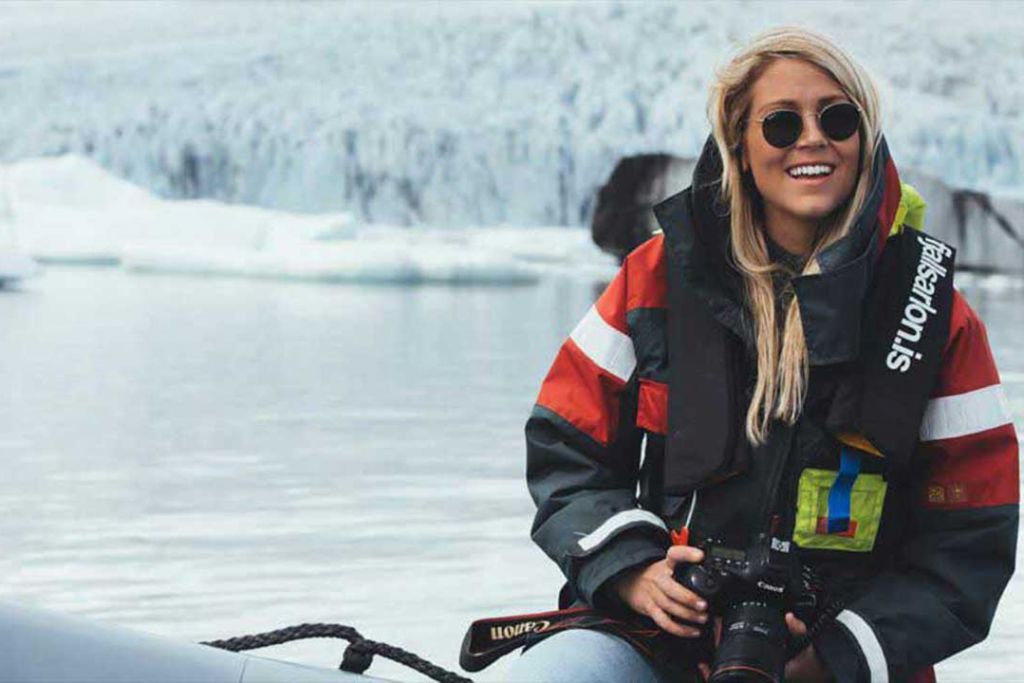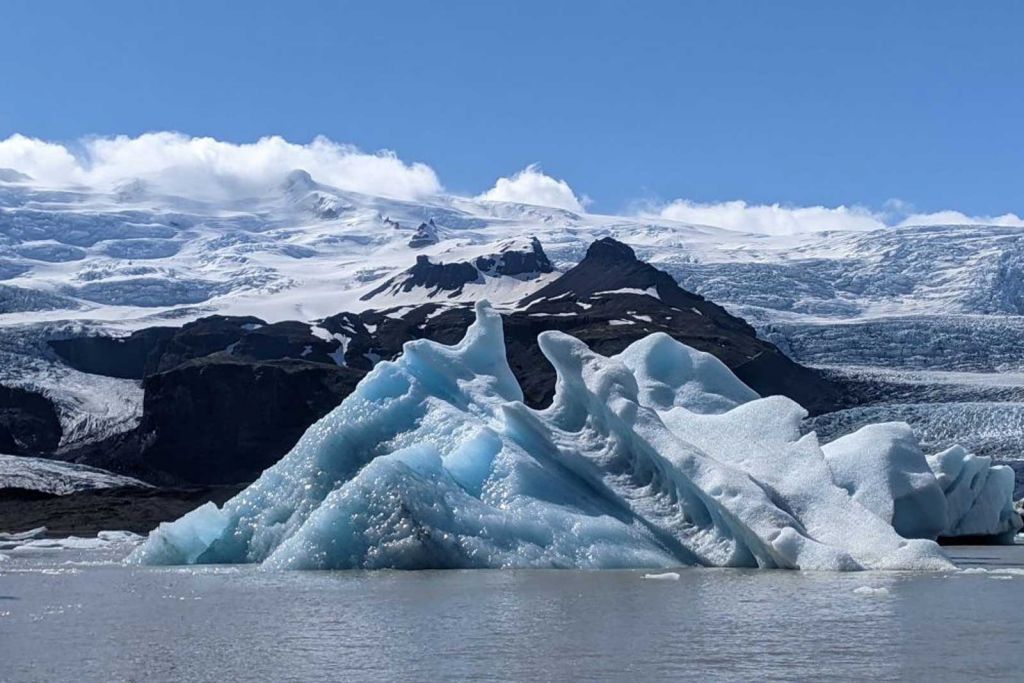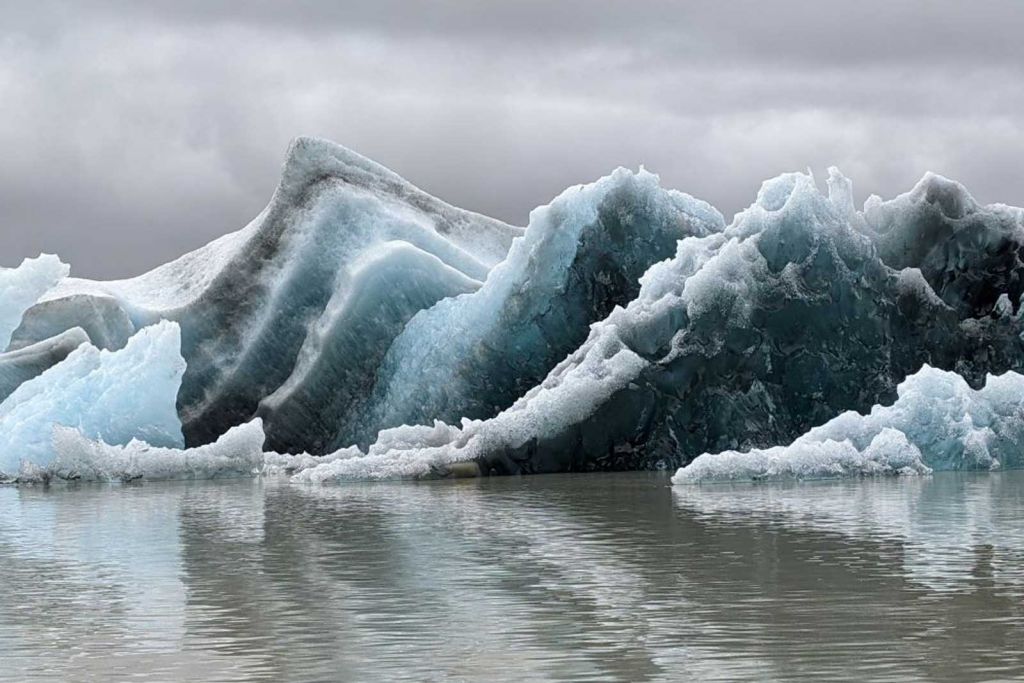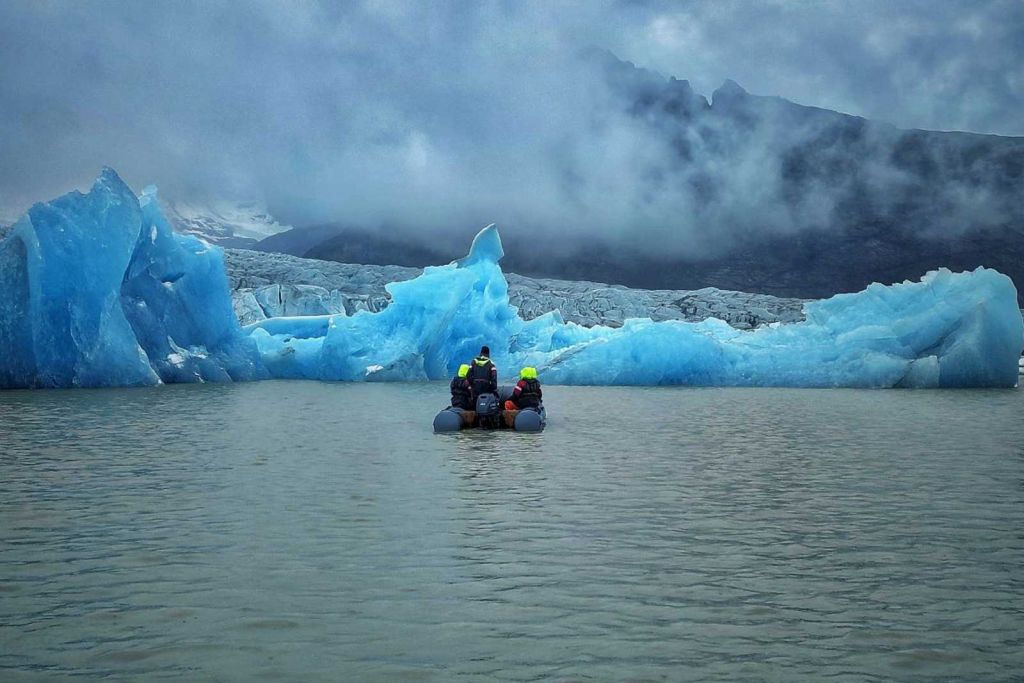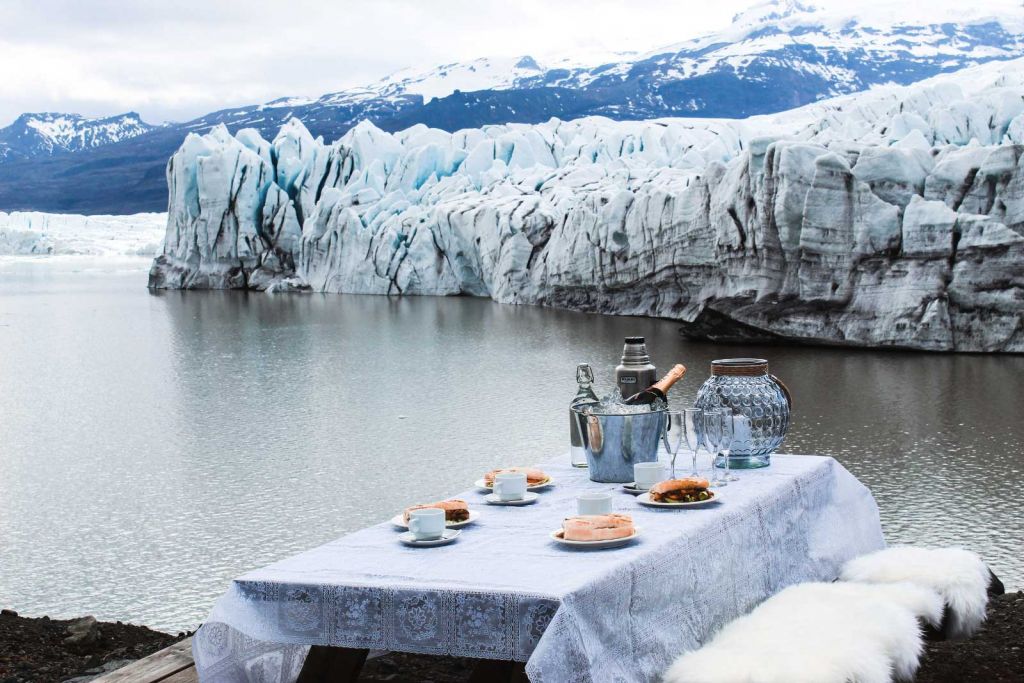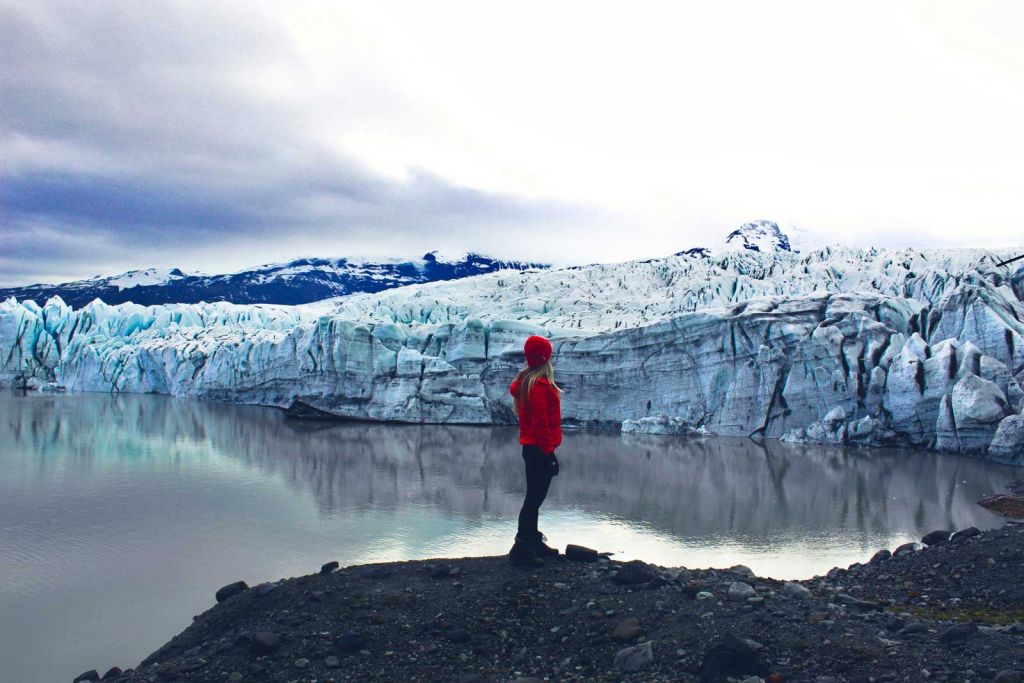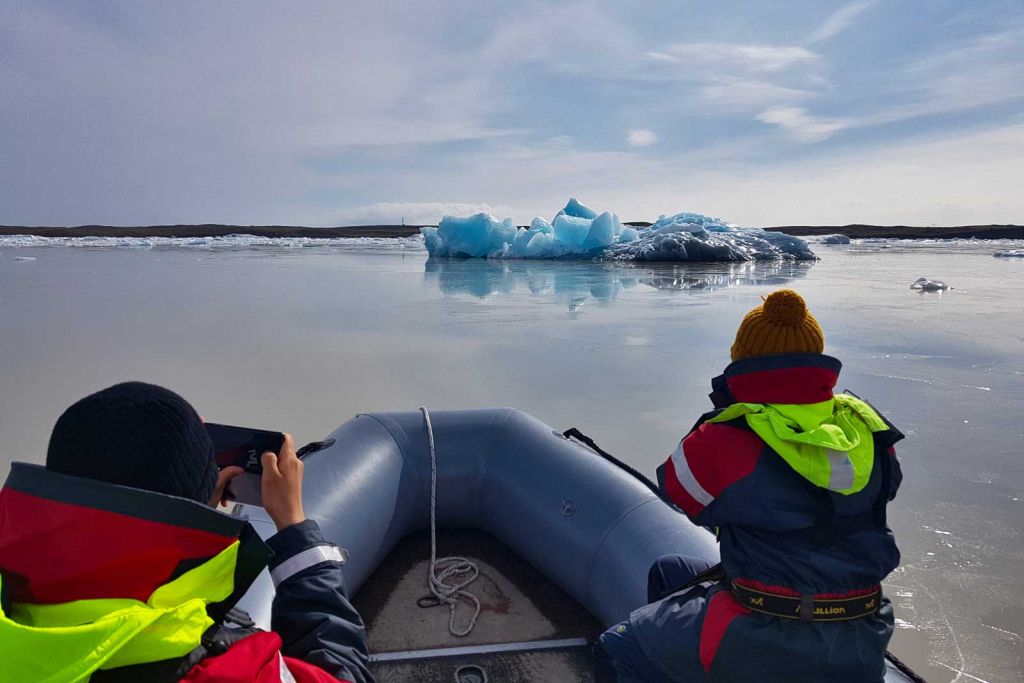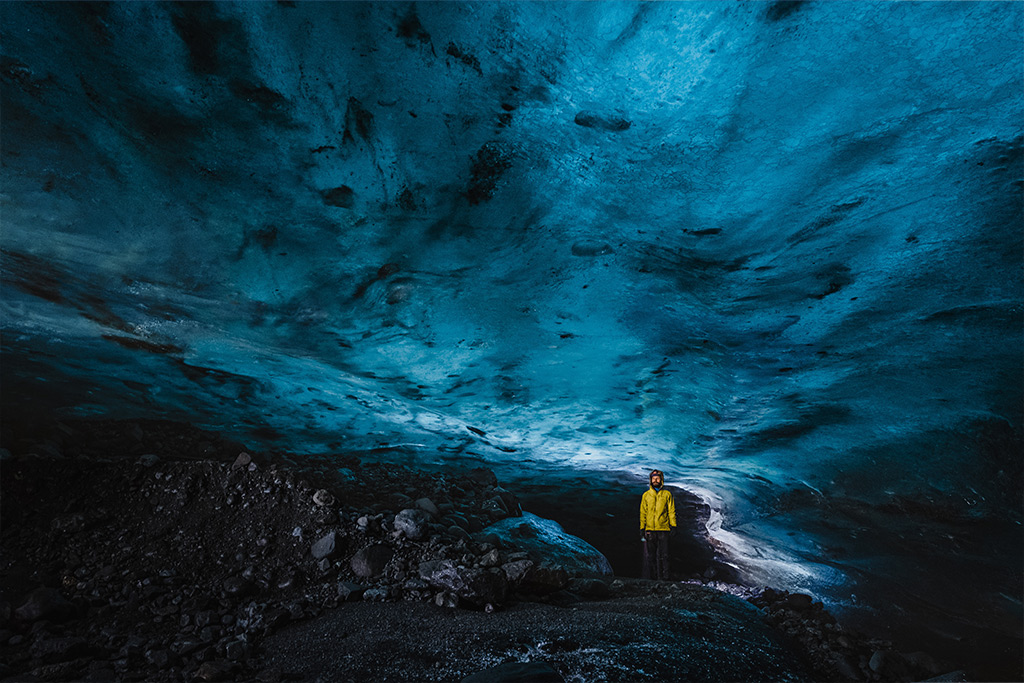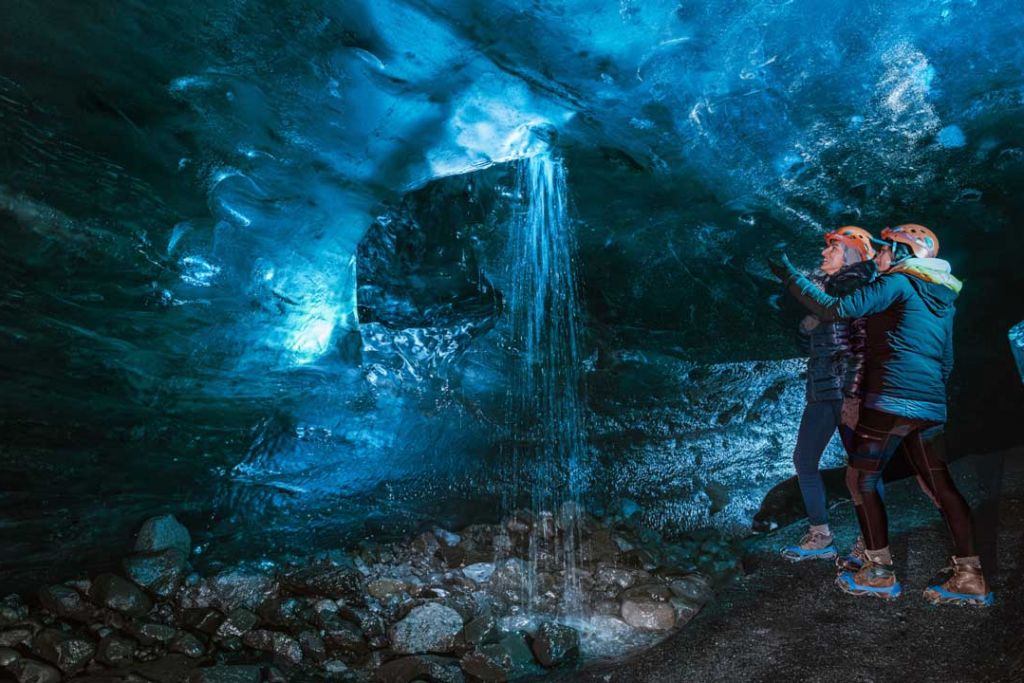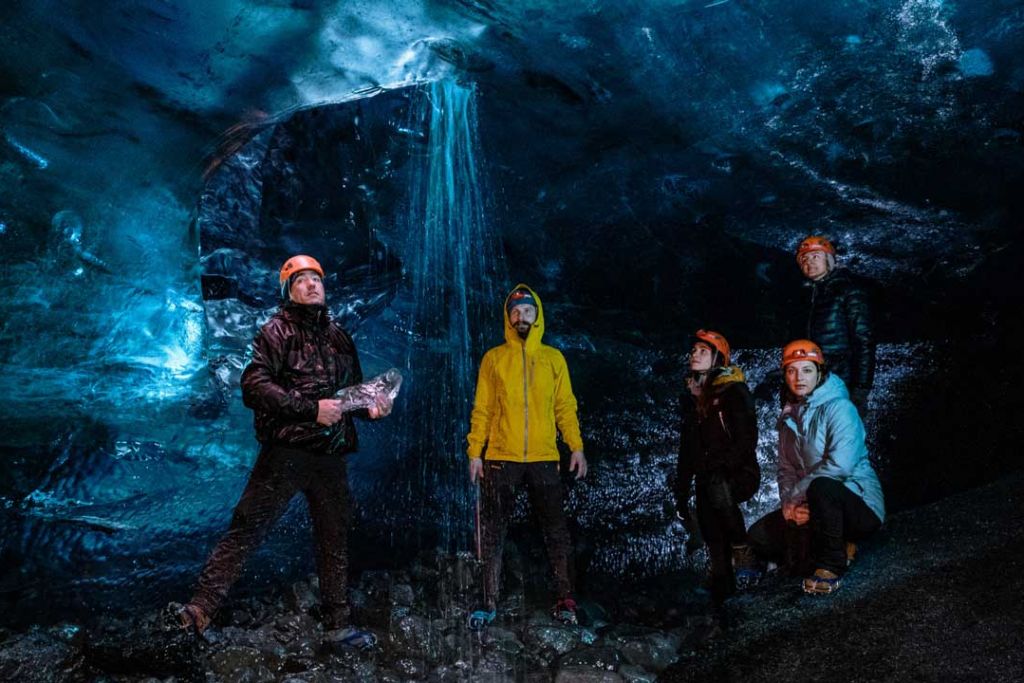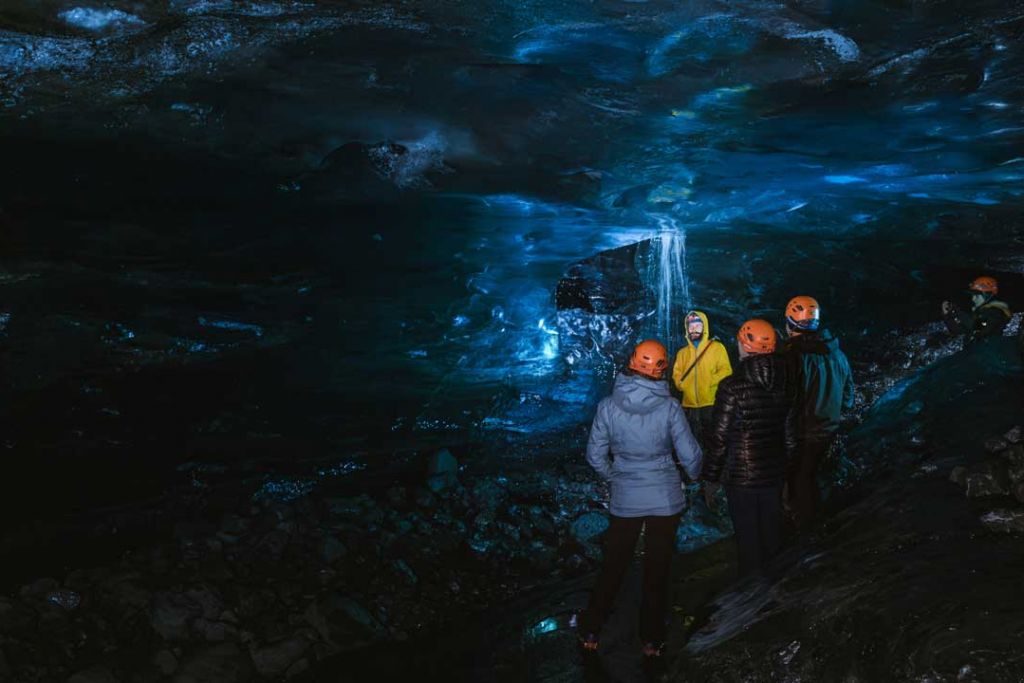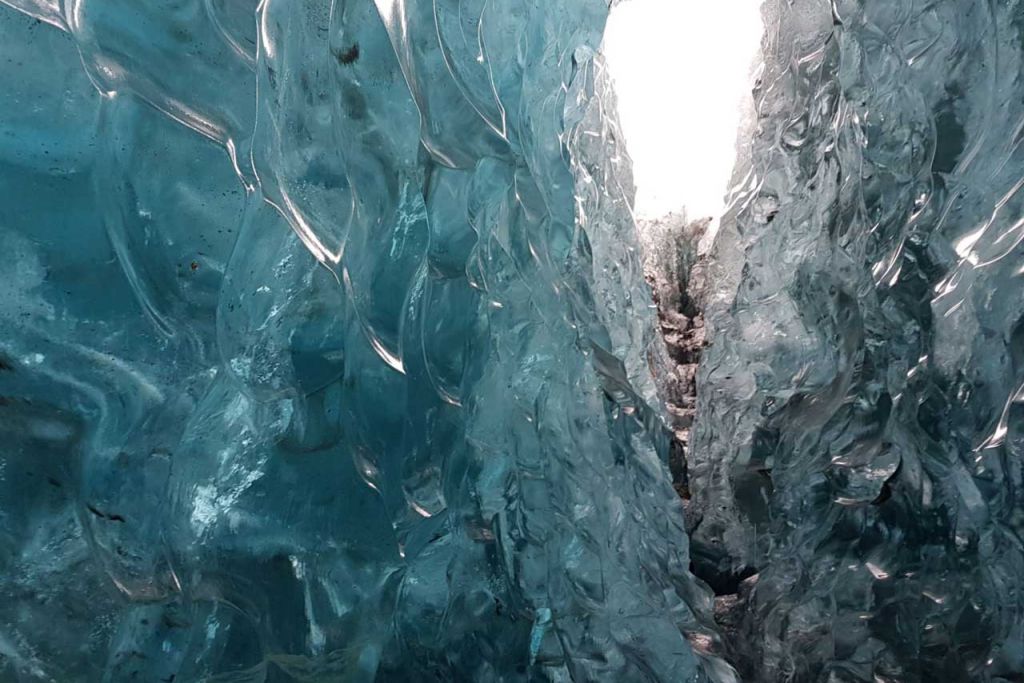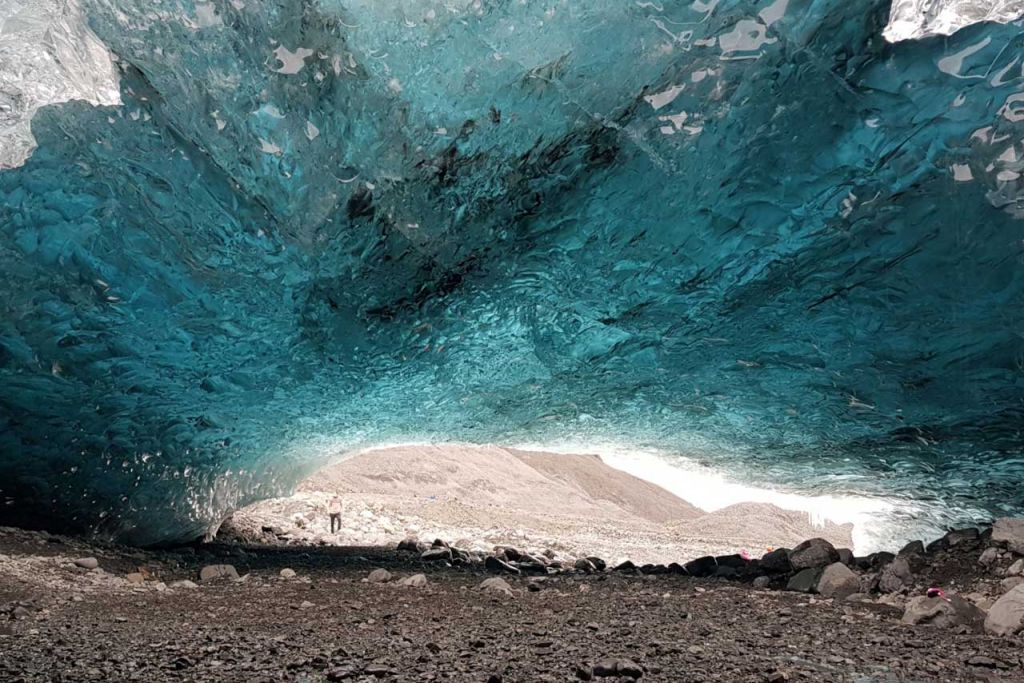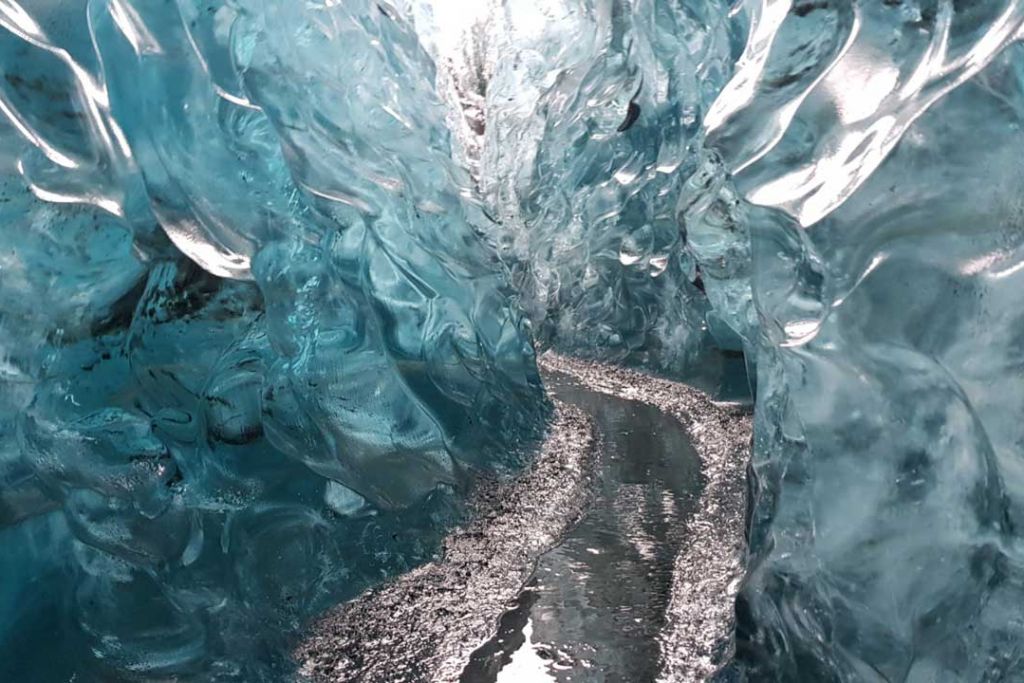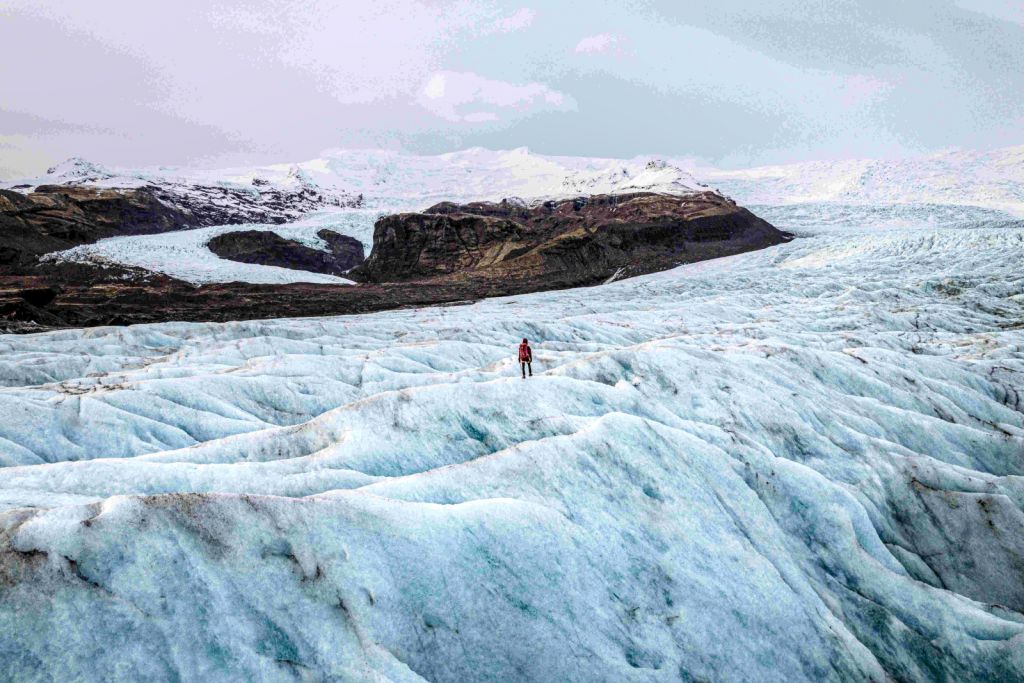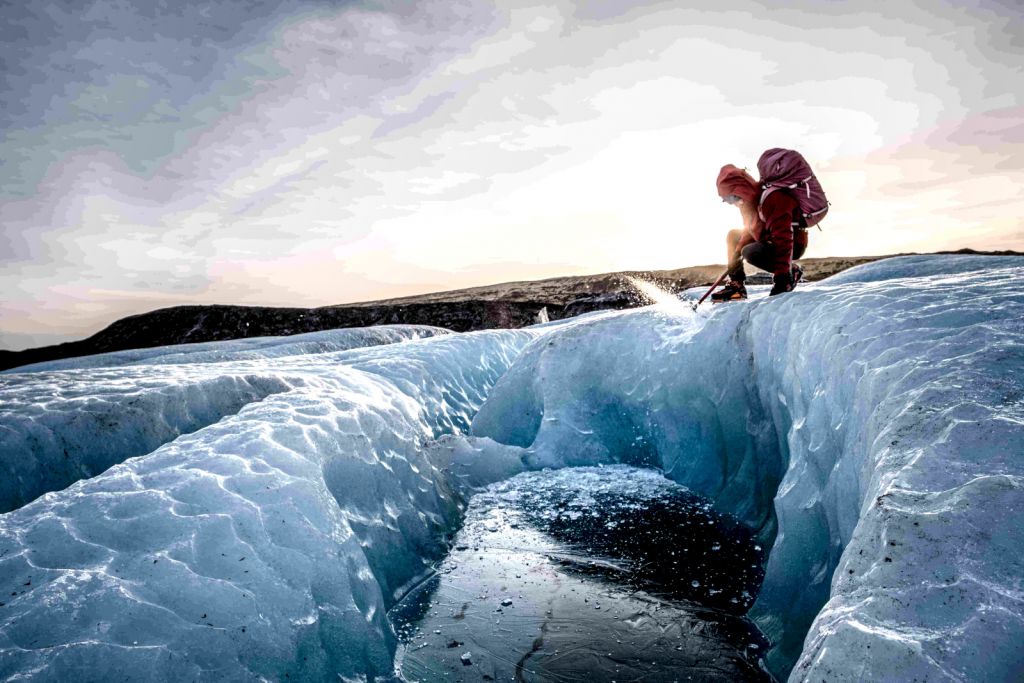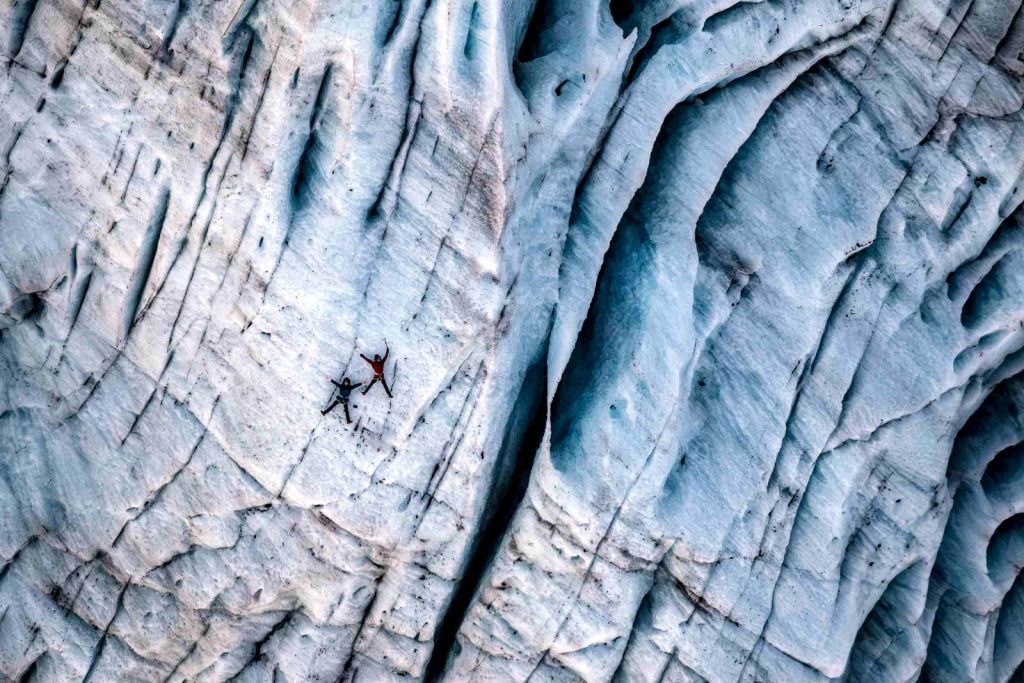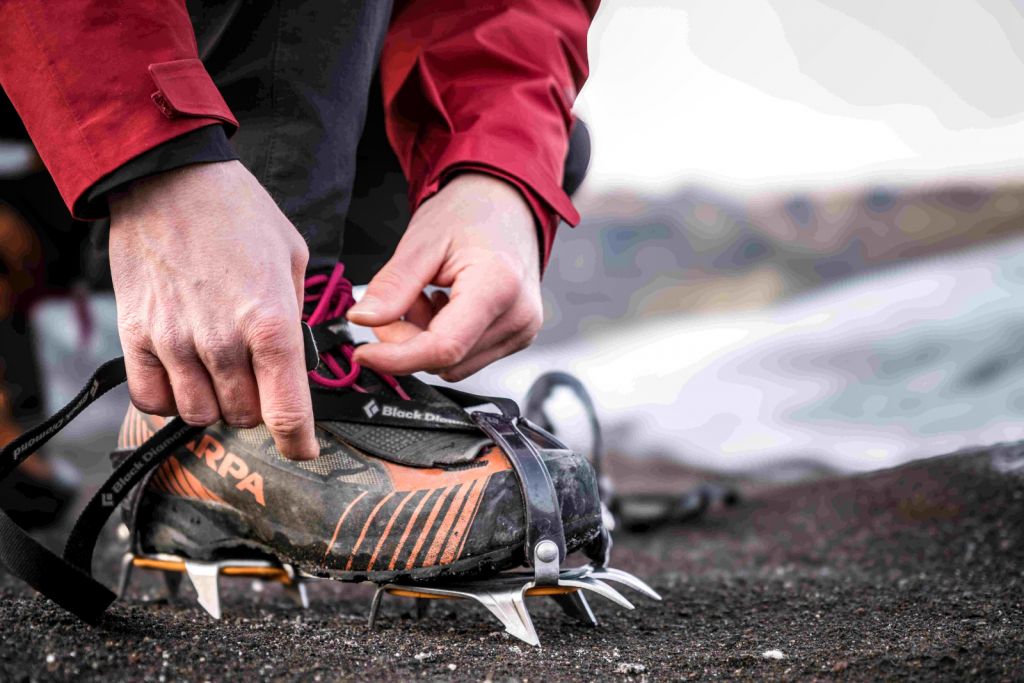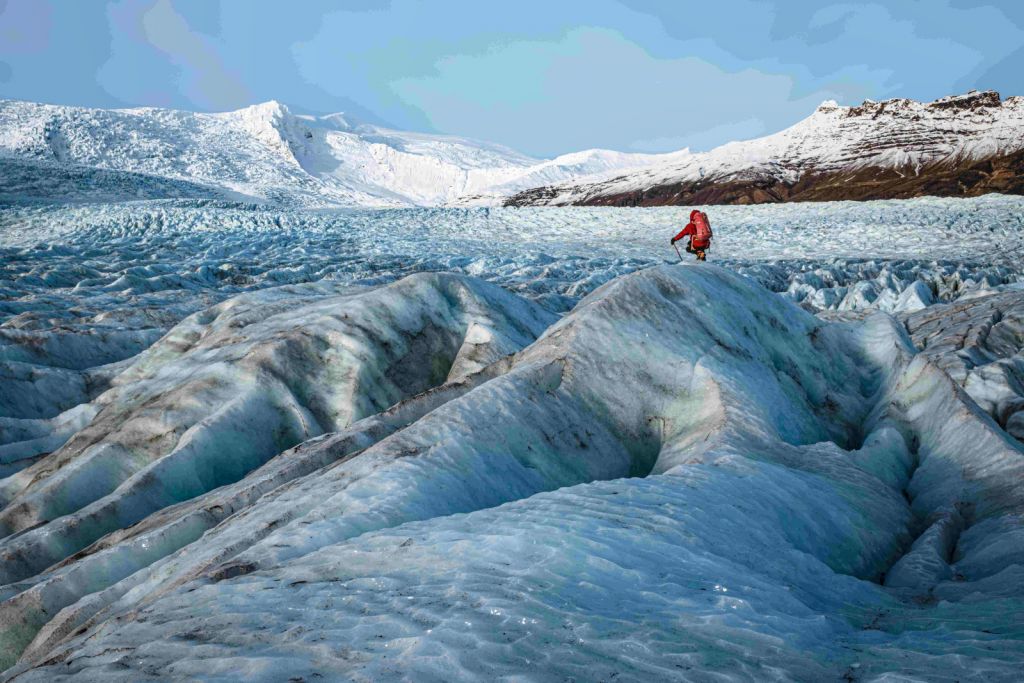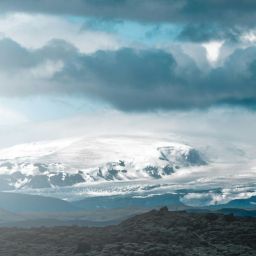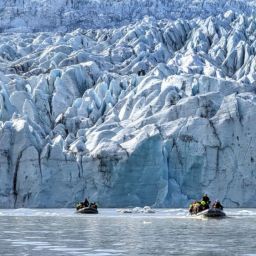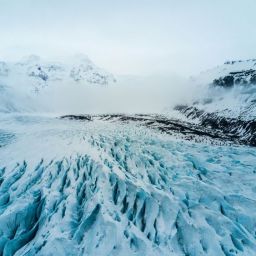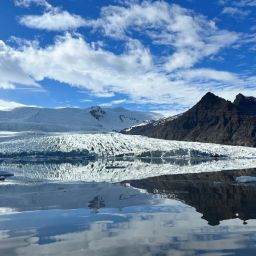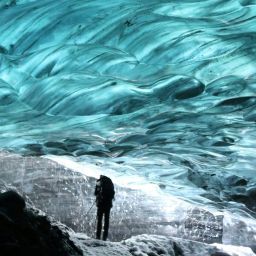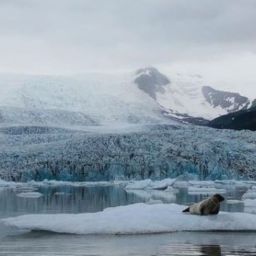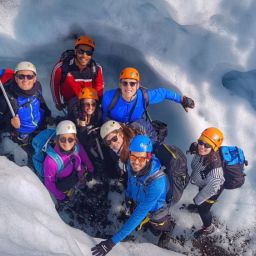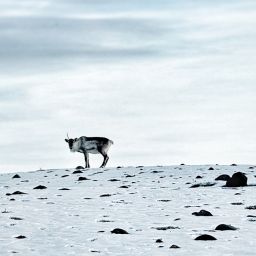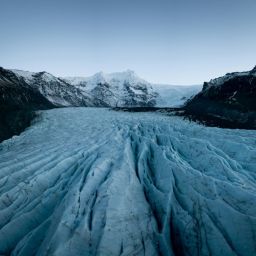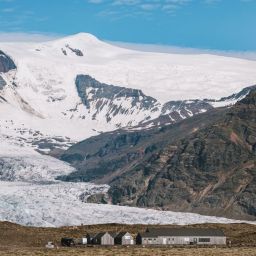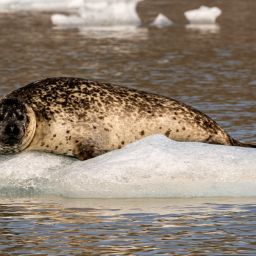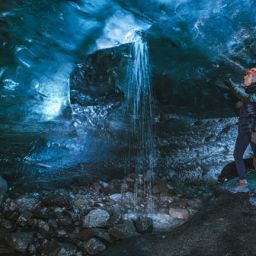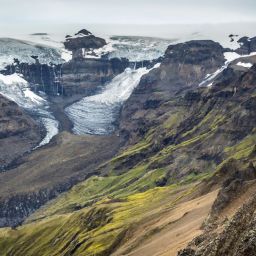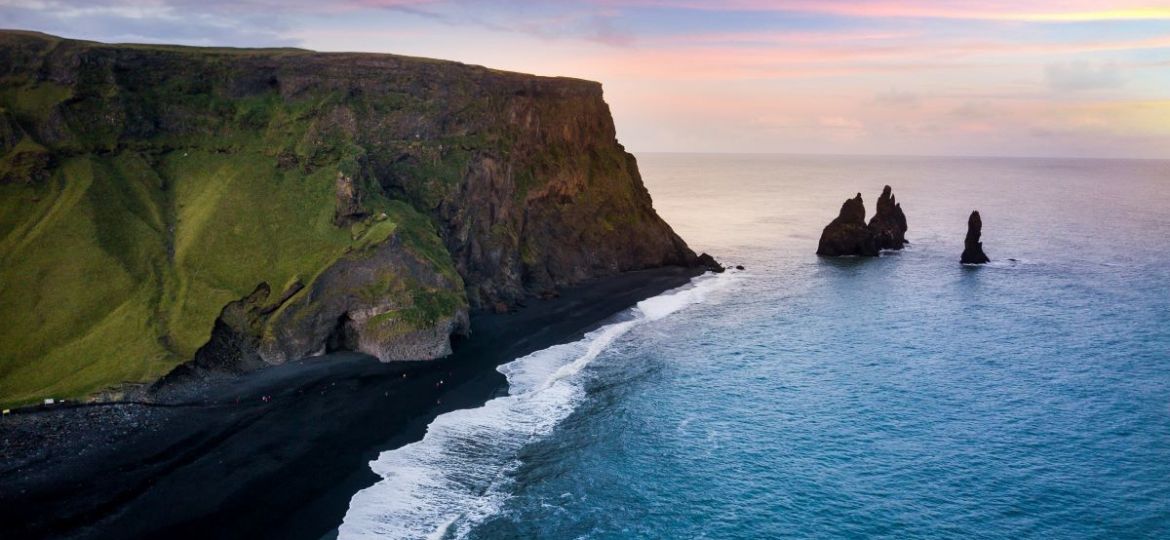
The vast black sands and black beaches you find in the South of Iceland often leave many feeling as though they’ve stepped onto another planet. The most famous black sand beaches in Iceland are the Diamond beach and the Black Beach (Reynisfjara). Another frequently visited tourist attraction is the airplane wreck on Solheimasandur, black sand beach.
Why is the sand black in Iceland?
Iceland’s black beaches get their unique look from the island’s volcanic past. The black sand comes from lava that cooled down after hitting the cold Atlantic waters. Over time, the lava turned into small volcanic rocks, which eventually weathered into tiny pebbles, making up the black sand we see today.

Diamond Beach Southeast Iceland
The real name of the Diamond beach is Fellsfjara. You will find the famous beach only ten minutes’ drive away from Fjallsarlon glacier lagoon. The beach got it´s nick name due to icebergs that wash ashore from the glacier outlet Breidamerkurjokull glacier by Jokulsarlon glacier lagoon. The icebergs are delivered down a river from the glacier lagoon and often lay scattered all over on the black beach. When the glistening sun reflects off the ice some look like rough diamonds, hence the name Diamond beach has stuck.
Black Beach – Reynisfjara – South Iceland
The real name of the Black beach is Reynisfjara. At Black Beach you can explore the famous hexagonal basalt columns and look out to sea where Reynisdrangar, a large collection of basalt columns rise majestically from the seabed. Folklore says that these magnificent rocks were once trolls that got caught in daylight turning them to stone whilst towing ships to shore. When driving the south coast of Iceland, you should definitely put the Black Beach on your to do list. When visiting be aware of the perilous waves that sweep the shore regularly, tourists have been caught up in them and washed to sea. If you follow the rules and guidelines, Reynisfjara beach is safe to visit.
Sólheimasandur black sand plane wreck – South Iceland
The airplane wreck found at the black sands at Sólheimasandur carries a different story.
The airplane crashed in 1973 due to human error, the pilot seems to have switched to the wrong fuel tank thinking he was running out. He was then forced to make an emergency landing on the black sand, luckily no one was seriously harmed or killed. The DC-3 airplane wreckage on Sólheimasandur is a popular destination in the south. To reach the airplane on foot you need to give yourself a few hours, walking amidst endless black sand to the abandoned aircraft. It is quite a sight seeing the deteriorating body of the plane appearing in front of you, resting on Sólheimasandur, sand.

History and importance of black beaches
In the past these black beaches were of no use to livestock as little vegetation grew on their shores. They were, however, important to the inhabitants of the area as the sea delivered driftwood from the Atlantic Ocean onto its beaches. Settlers used driftwood to build houses and as firewood to heat their accommodation on cold winter days.
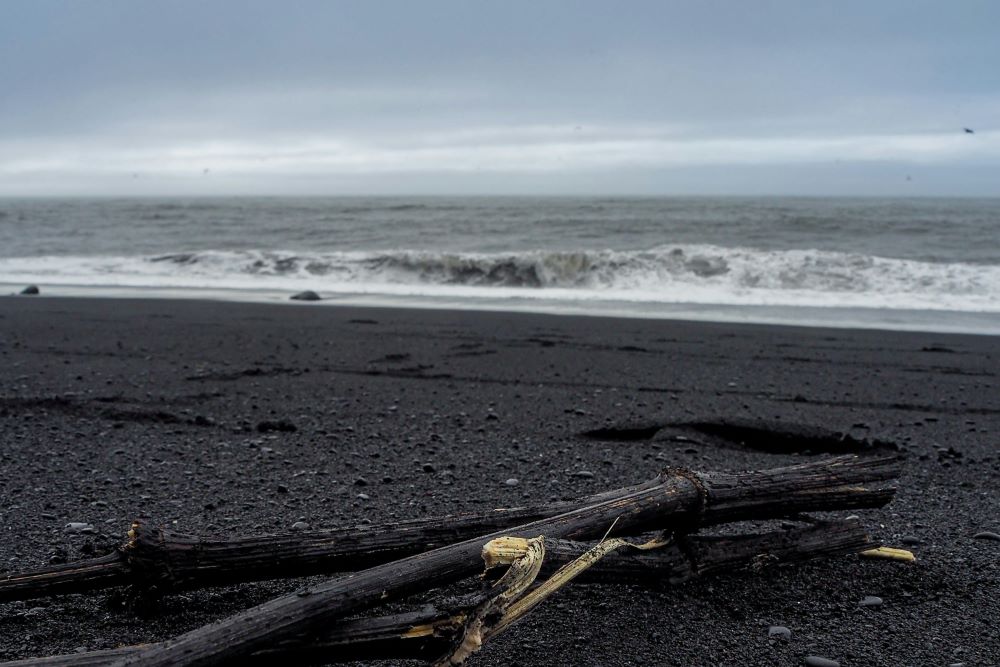
In Iceland, landowners typically possessed ownership over the beaches within their land. The general rule was that they also had fishing rights up to 115 meters into the sea from their shores. Having beach rights held great value to landowners, others who were not so fortunate had to buy the right to collect driftwood from beaches. The ownership of the land was one person’s fortune, but the ownership of any drift material and all fishing rights was another man’s asset. Each beach owner had a special wood mark he would carve into the driftwood. If the driftwood was marked clearly and was then washed onto another person’s beach, the wood belonged to the farmer that had its “mark” carved on it. The farmer was then allowed to collect the wood and retain ownership of driftwood.
When settlers arrived in Iceland around in the year 874, they found fertile lands rich with vegetation and forests. With over exploitation, cutting, grazing, and burning the trees the woods rapidly disappeared. Climate change and volcanic eruptions also did not help the situation either. Today we do not have many forests in Iceland and the trees are quite small. Icelander’s joke around saying “if you get lost in the woods, just stand up”.
As mentioned before driftwood was used to build houses all around Iceland, that was also very much the case in the south and southeast of Iceland. At Hof farm in Öræfi you will find concrete houses still lived in that have driftwood as carrier beams. The nature of driftwood is that it does not fawn and rot easily. By spending years drifting in the sea the salt penetrates the wood offering some natural grout protection.
Hof Church – Southeast Iceland
The small, famed turf church in Hof is almost entirely built from driftwood as well as from other materials such as rocks, stone slabs. Hofskirkja or Hof church was the last church in Iceland that was built in this traditional style. The roof of the church is covered with grass, during summer the green grass offers wonderful contrasts in colors. Hof church is one of few turf churches left standing in Iceland, it has been maintained by the National Museum in Iceland. Hof church attracts thousands of tourists each year. Centuries ago, you would find many turf churches like Hof church all around Iceland.
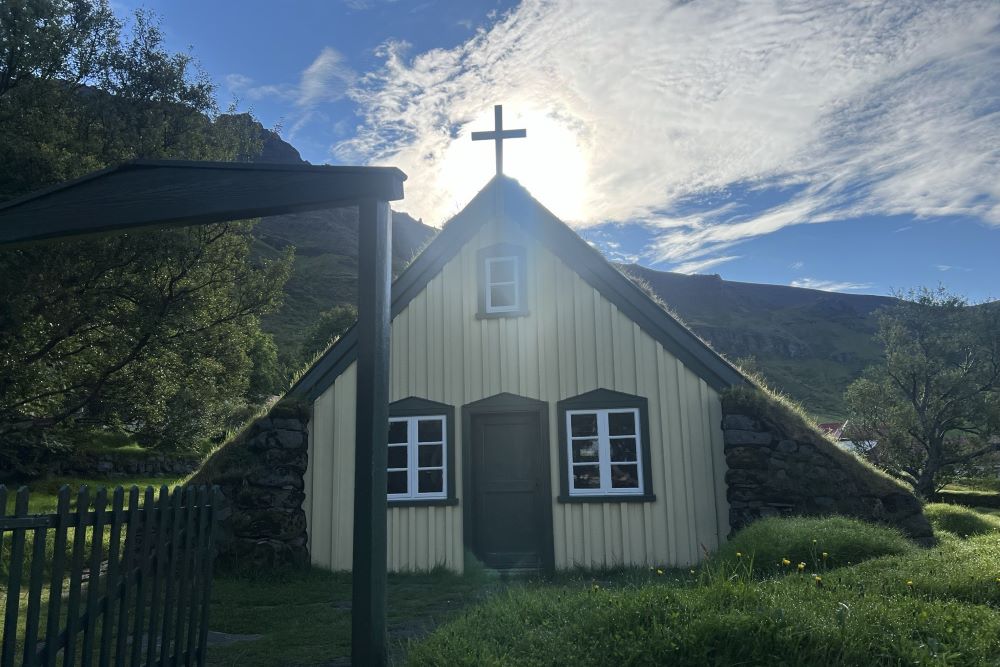
The sea also brought other valuables than driftwood to Iceland’s shores, such as whale’s carcasses. It was considered a great thing as many hungry mouths could be fed for a long time. In Iceland it is a saying when you get unexpected huge benefits or get a great person to your association that you’ve received a “whale drift”. In Öræfi people also used to speak with somewhat mixed emotions about ships stranding on the south coast shores. It was a great strand, the locals used to say with memory of all the goods and merchandise that came to be available to the community. The last ship that stranded in Öræfi in 1963 and was a British trawler. The goods from the ship were shared into the community where many tasted biscuits and cereals for the first time.
In the year of 2016 Thomas Rappaport, a German artist spent weeks in Iceland making art out of driftwood. Some of the pictures and art pieces he made can be found in our facilities at Fjallsarlon glacier lagoon.
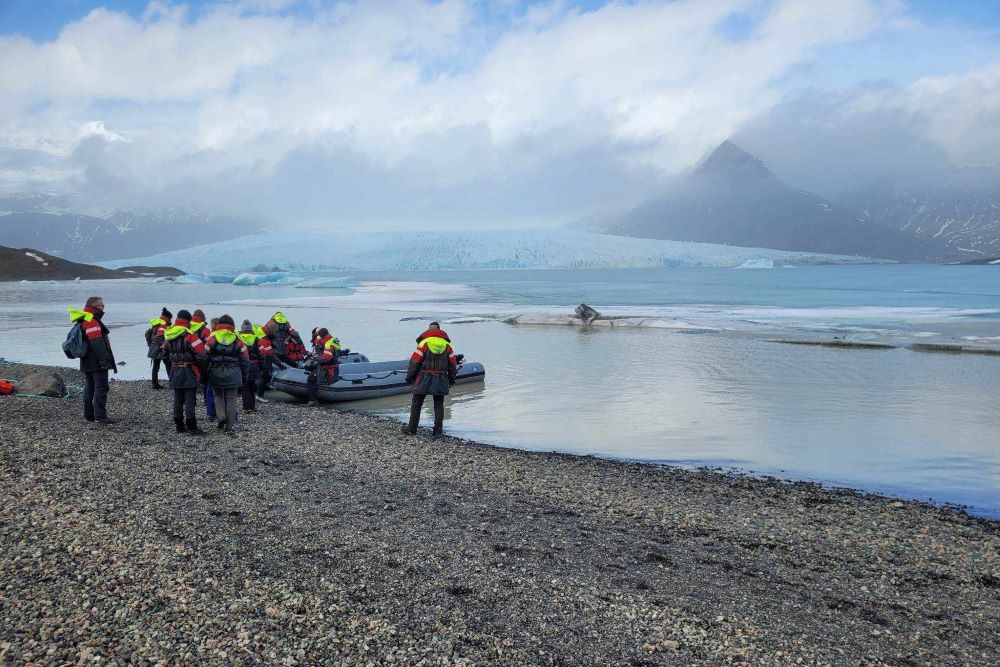
Fjallsarlon Glacier Lagoon Beach and Boat Tour
At Fjallsarlon Glacier Lagoon you will also find a black beach offering an amazing view over the glacier, the lagoon filled with icebergs and mountains. Many tourist and guests visit to join the ICEBERG BOAT TOUR on the lagoon, to learn about this magnificent natural wonder and enjoy peace and quiet in untouched nature.
The black sand beaches of South Iceland, with their volcanic history, offer a mesmerizing glimpse into the island’s past and natural wonders. From the iconic Diamond Beach to the legendary Reynisfjara and the historic Sólheimasandur plane wreck site, each holds its own tale of nature’s forces and human interaction. Today, they continue to captivate visitors with their unique charm and offer a glimpse into Iceland’s history.
OUR TOURS
Your multi adventure starts with a calm boat ride on Fjallsarlon glacier lagoon. Following the boat ride, you’ll land at the foot of Fjallsjokull glacier, a place we have secluded access to. After the glacier hike, you will walk to a super jeep for a fun 15-20 min. return drive.
Sail with us in a Zodiac boat, amongst floating icebergs on the majestic Fjallsarlon Glacier Lagoon. This adventure tour will allow you to connect with the Icelandic nature in a way you have never experienced before. Come, have fun and cruise with us!
Immerse yourself in the spectacular Icelandic wilderness and spend a memorable night on the lagoon. The magnificent view over the glacier lagoon towards Vatnajökull Glacier, the largest glacier in Europe is sure to impress even the most experienced traveler!
On this private tour you can decide along with your captain how your cruise evolves. Cruise among icebergs and sail beside the glacier wall in your own style! This tour is popular with couples, friends & families who want to share an adventure in a private and personal way.
Cruise to a secret island located close to the edge of the glacier in the lagoon. Set foot on land that only few have entered! Sip champagne and take in the magnificent view towards Vatnajokull Glacier, the largest glacier in Europe. Create memories that will last a lifetime.
Explore the Icelandic wilderness on our way to a blue ice cave located in Breidarmerkurjokull glacier outlet.
Ice caves are a natural wonder that every adventurer should behold.
BLUE ICE GLACIER HIKE
Encounter the extraordinary by joining our exclusive glacier hike! This trip is tailored for those who seek adventure, are physically fit, and have a deep desire to explore the untouched, rugged attraction of Fjallsjökull glacier.


